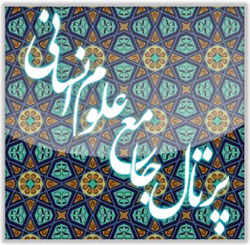Bast-Sitting of the People of Kermanshah in the National Consultative Assembly during the Constitutional Era
Keywords:
Merchants and bazaars, Seif al-Dawla, Kermanshah, Qajar, National AssemblyAbstract
The people of Kermanshah, who were subjected to intense pressures and damages throughout the Constitutional Movement, resorted to bast-sitting (seeking sanctuary) twice in order to achieve their demands. The first bast-sitting by the people of Kermanshah in the British Consulate resulted in the bazaar being plundered by the tribes. Consequently, those who had incurred losses traveled to Tehran to continue bast-sitting in the National Consultative Assembly. This study was conducted to answer the question: What were the causes, contexts, and outcomes of the bast-sitting of the people of Kermanshah in the National Consultative Assembly? This research has been carried out using library sources and follows a descriptive-analytical method. According to the findings of this research, the appointment of the despotic Seyf al-Dowleh as the governor of Kermanshah was the primary factor in this event. From the time of his arrival in that city, Seyf al-Dowleh acted in opposition to the constitutionalists; through negligence and obstruction in holding elections for the Assembly, he provoked public anger and prompted the people's sit-in at the British Consulate. Meanwhile, the tribes allied with Seyf al-Dowleh ransacked the city’s bazaar. In this incident, merchants and bazaar shopkeepers—who had joined the Constitutional Movement from its inception to improve their situation, which had deteriorated due to colonial concessions and treaties—were once again harmed. Since no one addressed the situation in Kermanshah after the sit-in ended, they proceeded to Tehran to seek redress from the Assembly, demanding the prosecution of those responsible for the bazaar’s plunder and compensation for their losses. Ultimately, with considerable perseverance and the support of Kermanshah’s representatives in the Assembly, they succeeded in obtaining compensation for part of their confiscated assets from Seyf al-Dowleh.
Downloads
References
Abrahamian, Y. (2004). Iran between two revolutions. Tehran: Markaz.
Adamiyat, F. (1977). Social, political, and economic thoughts in unpublished works of the Qajar period. Tehran: Agah Publishing.
Aubin, E. (2012). Iran today (1906-1907). Tehran: Elm.
Bashiri, A. (1984). Blue Book; Confidential reports of the British Foreign Office regarding the Constitutional Revolution of Iran. Tehran: No.
Biglari, H. (1995). The history of Kermanshah in the Qajar era (Vol. 2). Kermanshah: Taq-e Bostan, History of Iran.
Ghayrat, A. K. (1959). Collected works and writings of Ghayrat Kermanshahi. Tehran: Ferdowsi.
Malekzadeh, M. (1992). The history of the Constitutional Revolution of Iran (Vol. 2). Tehran: Scientific Publishing.
McDowell, D. (2004). Contemporary history of the Kurds. Tehran: Paniz.
Mirza Saleh, G. H. (2005). Discussions of the First Parliament. Tehran: Maziar Publishing.
Mo'tamedi, F. K. (2006). The Constitutional Movement in Kermanshah and Kangavar: Notes and memoirs of Mirza Farajollah Khan Mo'tamedi and Emanollah Khan Sari Aslan Amir Tuman. Tehran: Institute for Research and Development in Humanities.
Natiq, H. (1994). The prominent figures in dealings with the Royal Bank and the Tobacco Regie (based on Amin al-Darab's archive). Tehran: Tous Publishing.
Nazem al-Saltaneh Mafi, H. K. (1983). Memoirs and documents of Hossein Qoli Khan Mafi (Vol. 1). Tehran: Iran History Publishing.
Rezazadeh Malek, R. (1998). The Constitutional Revolution of Iran (Blue Books). Tehran: Maziar Publishing.
Safaei, E. (1983). Leaders of the Constitutional Movement. Tehran: Javidan.
Sanjabi, A. A. (2001). The Sanjabi tribe and national struggles in Iran: Memoirs of Ali Akbar Khan Sanjabi, the powerful commander. Tehran: Shirazeh.
Shamim, A. A. (2005). Iran during the Qajar dynasty in the 13th century and the first half of the 14th century. Tehran: Zaryab.
Soltani, M. (1993). Historical geography and detailed history of Kermanshah (Vol. 2). Tehran.
Soltani, M. (2007). Documents of the Constitutional Movement in Kermanshah from the Archive of Ayatollah Haj Mohammad Mehdi Kermanshahi (Feiz Mahdavi), Leader of the Nationalists of Kermanshah. Tehran: Institute for Research and Development in Humanities.
Teymuri, E. (1953). The age of ignorance or the history of Iran's privileges. Tehran: Iqbal & Co.
Voreham, G. R. (2006). Political system and social organizations in Iran during the Qajar era. Tehran: Mo'in.
Zahir al-Dowleh, A. B. M. N. (2006). Memoirs and travelogue of Zahir al-Dowleh. Tehran: Abi.

Downloads
Published
Submitted
Revised
Accepted
Issue
Section
License
Copyright (c) 2025 Azadeh Salari (Author); Amirteymour Rafiei; Hamidreza jadidi (Author)

This work is licensed under a Creative Commons Attribution-NonCommercial 4.0 International License.







